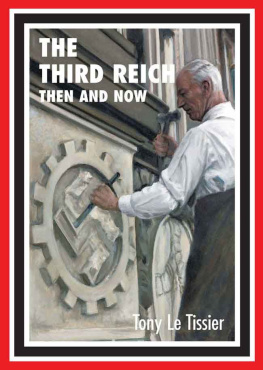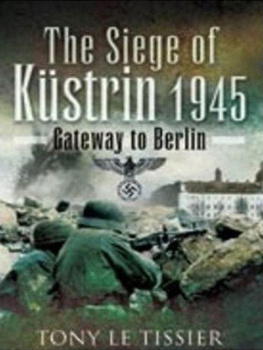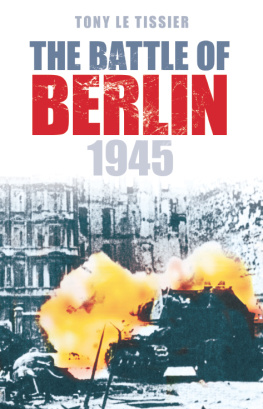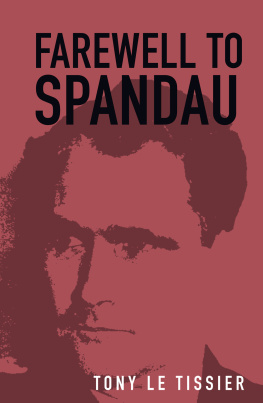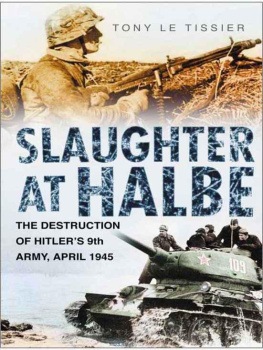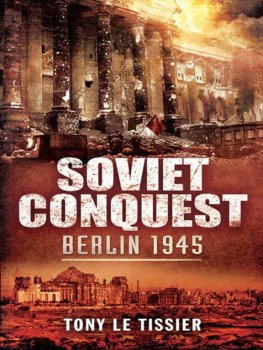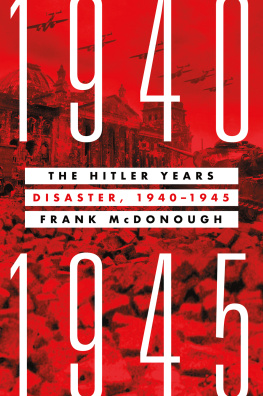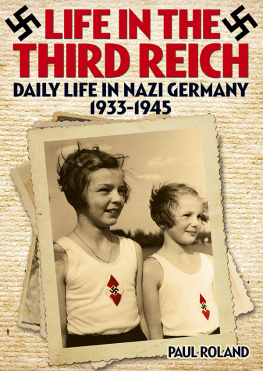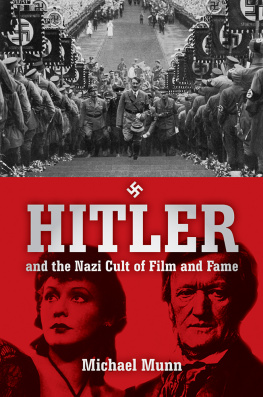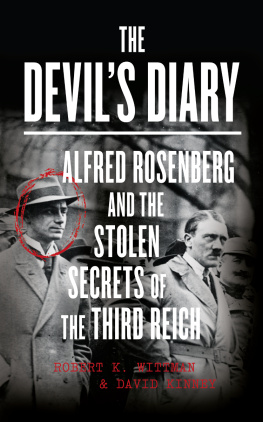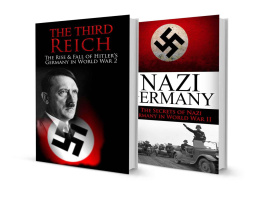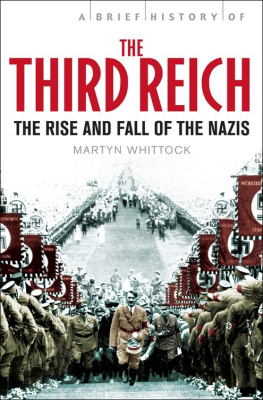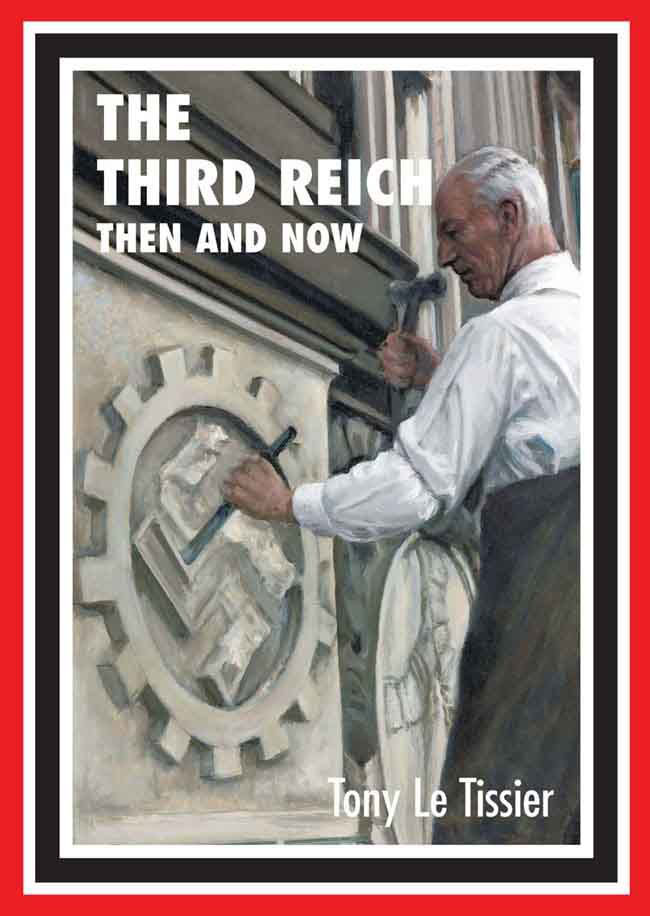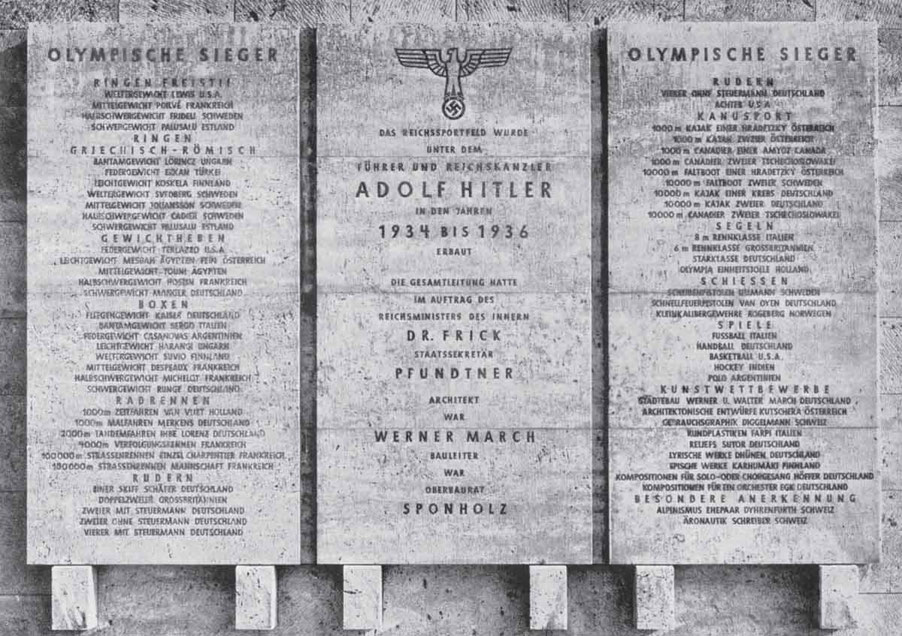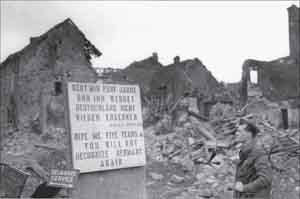THE THIRD REICH THEN AND NOW
These buildings of ours should not be conceived for the year 1940, no, not for the year 2000, but like the cathedrals of our past they shall stretch into the millennia of the future.
ADOLF HITLER, SEPTEMBER 7, 1937
THE THIRD REICH THEN AND NOW
By Tony Le Tissier
Credits
ISBN: 1 870067 56 8
First published in Great Britain in 2005 by
After the Battle
Published in 2021 by After the Battle,
An imprint of Pen & Sword Books Limited
Yorkshire Philadelphia
All rights reserved. No part of this book may be reproduced or transmitted in any form or by any means, electronic or mechanical including photocopying, recording or by any information storage and retrieval system, without permission from the Publisher in writing. For a complete list of Pen & Sword titles please contact PEN & SWORD BOOKS LIMITED 47 Church Street, Barnsley, South Yorkshire S70 2AS, UK
E-mail: enquiries@pen-and-sword.co.uk
Website: www.pen-and-sword.co.uk
Or
PEN AND SWORD BOOKS
1950 Lawrence Rd, Havertown, PA 19083,
USAE-mail: Uspen-and-sword@casematepublishers.com
Website: www.penandswordbooks.com
FRONT COVER: De-Nazification in Ham-burg (see page 6). From a painting by George A. Campbell.
REAR COVER: Sergeant Bob Russell of the 2nd Devonshire Regiment takes the final salute from the balcony of the Reich Chan-cellery in Berlin.
FRONT AND REAR ENDPAPERS: Rewriting history in Berlin. These three plaques were erected at the Olympic Stadium to commemorate the Games
in 1936... but today the central one has been censored to remove any connection with the Third Reich.
(Adolf), Amann, Streicher, Graf, von Brauchitsch, Raeder, Gring, Milch, Himmler and Frick.
The peaceful setting of the present-day Luit-pold Arena in Nuremberg, captured by American forces rather appropriately on April 20, 1945 Hitlers birthday!
Acknowledgements
The author is indebted to the following individuals and organisations for their assistance in the production of this volume.
Oberstleutnant Holger App, Sanittsakademie der Bundeswehr, Mnchen; Professor Jay W. Baird, Columbia University, Ohio; Walter Bartl, Stadtarchiv Bayreuth; Florian Beierl, Zeitgeschichtliches Archiv Berchtesgaden; Roger Bell; Imme van den Berg; Robert Bierschneider, Staatsarchiv Mnchen; Margot Blank, Deutsch-Russisches Museum Karlshorst; Doris Bohm, Kreismuseum Wewelsburg; Herr Bmerl, Stadtmuseum Mnchen; Kapitnleutnant Dirk Brne, Marineschule Mrwik, Flensburg; Fregattenkapitn Roland Bhner, Marineschule Mrwik, Flensburg; Hans-Peter Busch, Stadtarchiv Erwitte; Henk van Capelle; Dr Klaus Dettmer, Landesarchiv Berlin; Andreas Ehresmann, KZ-Gedenksttte Neuengamme; Stefan Erichsen, Polizei Flensburg; Wilfried Engelbrecht, Historisches Museum Bayreuth; Helmuth Euler; Michael Foedrowitz; Willi Fischer; Frau Friedrich, Standesamt Halberstadt; Ulrich Fritz, KZ-Gedenksttte Flossenbrg; Harko Gijsbers and Ren Kok of the Nederlands Instituut voor Oorlogsdocumentatie; Hauptmann Hartmut Happel, Generaloberst-Beck-Kaserne Sonthofen; Jan Heitmann; Ole Hertel, Olympiastadion, Berlin; Frau Hoffmann, KZ-Gedenksttte Ravensbrck; Rob Hopmans; Monika Hvelmann, Stadtarchiv Wesel; Herr Huber, Friedhofverwaltung Mnchen; Herr Ingenpass, Stadtarchiv Essen; Klaus Janetzki, Landesarchiv Berlin; Frau Kahlefeld, Deutsches Historisches Museum, Berlin; Waltraud Kss, Bundesarchiv Berlin; Volker Knopf; E. Kremers, Stadtarchiv Krefeld; Dr Klaus Lankheit, Institut fr Zeitgeschichte, Mnchen; Karl Heinz Leder; Saskia Lelieveld; Christoph Links, Ch. Links Verlag, Berlin; Oberstleutnant Uwe Lffler, Wehrbereichkommando IV (Mnchen); Andreas Matschenz, Landesarchiv Berlin; Bernd Mayer, Bayreuth; Frans Mekers; Heinrich Meyer, Stadtarchiv Kirchenlamitz; Andrew Mollo; Hauptbootsmann Ralph Neumann, Presse- unf Informationszentrum Marine, Glcksburg; Jean Paul Pallud; Peter Plenk; Sebastian Remus; Klaus Rheinfurth, Institut fr Stadtgeschichte Frankfurt; Dr Martin Roelen, Stadtarchiv Kleve; Hans Jrgen Rolle; Rolf Sawinski; Herr Scheunemann, Olympiastadion Berlin; Christian Schmidt; Eberhard Schmidt, Wehrgeschichtliches Ausbildungszentrum, Marineschule Mrwik, Flensburg; 1ste Sergeant Chef Georg Schmitz, Kamp Vogelsang; Dr Dietmar Sedlaczek, KZ-Gedenksttte Moringen; Frits Stol; Hans Swetlik, Fleinhausen; Bert Thisse, Stadtarchiv Kleve; Dr Bernhard Trefz, Stadtarchiv Backnang; Oberstleutnant Klaus Treude, Wehrbereichkommando IV (Mnchen); Andrea Trudewind, Stadtarchiv Dsseldorf; Bernd Wagner, Stadtarchiv Bielefeld, and not forgetting the late Bart Vanderveen.
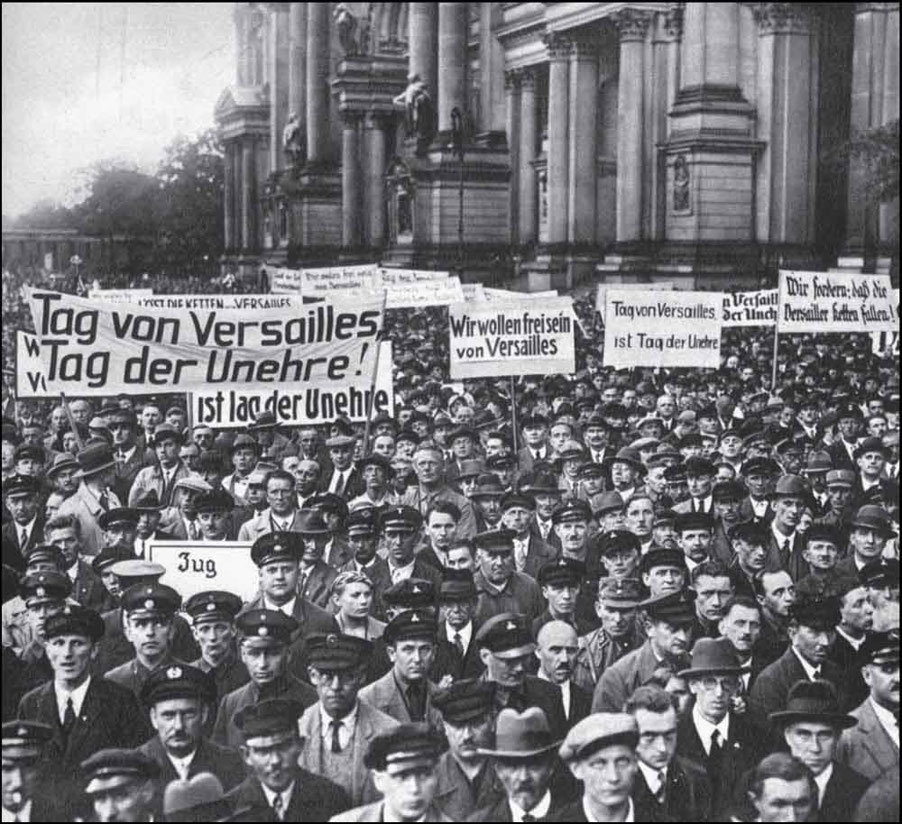
The seeds of unrest, which ultimately led to Adolf Hitler being installed as Chancellor of Germany and the birth of his Third Reich, were laid in 1919 with the signing of the Peace Treaty at Versailles. Here crowds in Berlins Lustgaten protest at the action of the Weimar government on the Tag von Versailles: June 28.
Contents
Introduction
Some sixty years have elapsed since the cataclysmic demise of Adolf Hitler and his Third Reich. In this book we trace the rise of Hitler, the Nazi Party and its ramifications, together with its deeds and accomplishments, during the twelve years that the Third Reich existed within todays boundaries of the Federal Republics of Germany and Austria.
The factors, circumstances, beliefs and feelings that engendered this extraordinary phase of European history have largely vanished in the course of time. Many of the Nazis ideas sprang from the previous century, such as a consciousness of German unity, the development of a national pride, the belief in Teutonic racial supremacy, the need for the population explosion to be accommodated by expansion to the east, etc. The failure of the German High Command to publically acknowledge defeat in 1918 that gave rise to the stab in the back theory, the collapse of the Hohenzollern and Habsburg dynasties, the rise of Communism, the punitive measures of the Versailles Treaty, and then the devastating effects of the Great Depression of the 1920s, all contributed to a great upheaval in the basic structure of German society that spawned the tenets of the Nazi Party. The losers of the First World War became the bully-boy beer hall warriors of the 1920s, and it was their families that came to pay the cost with the fear-some losses on the battlefields of the Second World War, the bombing of the homeland and finally the enforced resettlement of millions.
In the immediate post-war period, the Allied Control Commissions failed to expunge Nazis entirely from the administration of these countries, because everyone had been involved and was tainted with the old system. Consequently those in authority were able to whitewash the immediate past with an educational tabu on the subject, but these people have now gone and the subsequent generations have had the opportunity to discover for themselves what their past entails.

